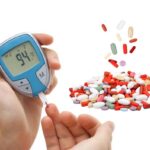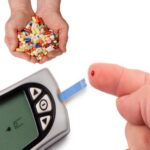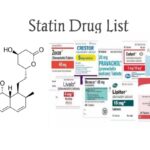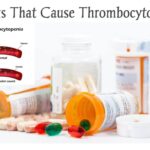List of Drugs That Can Cause Diabetes
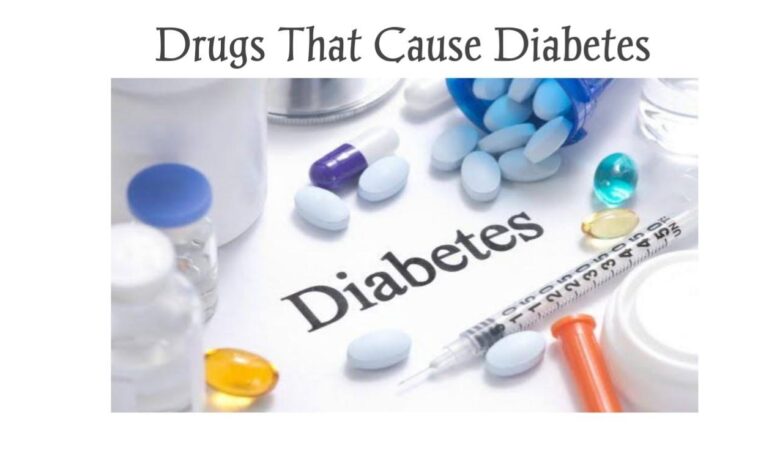
What is diabetes?
Diabetes happens when your body isn’t able to take up sugar (glucose) into its cells and use it for energy. This results in a build up of extra sugar in your bloodstream. In 2014, 8.5% of adults aged 18 years and older had diabetes. In 2019, diabetes was the direct cause of 1.5 million deaths.
Poorly controlled diabetes can lead to serious consequences, causing damage to a wide range of your body’s organs and tissues – including your heart, kidneys, eyes and nerves.

What is drug induced diabetes?
Drug induced diabetes is when use of a specific medication has lead to the development of diabetes. In some cases the development of diabetes may be reversible if use of the medication is discontinued, but in other cases drug-induced diabetes may be permanent.
Drug-induced hyperglycaemia increases the risk of microvascular and macrovascular complications, infections, metabolic coma and even death. Drugs may induce hyperglycaemia through a variety of mechanisms, including alterations in insulin secretion and sensitivity, direct cytotoxic effects on pancreatic cells and increases in glucose production.
Studies have shown that drugs which commonly cause diabetes during therapeutic use are the anti-hypertensive vasodilator diazoxide, and corticosteroids in high doses such as those used to palliate intracranial tumours. The full list of drugs that can increase glucose levels and cause diabetes are presented in the table below:
| Category | Agents | Mechanism* |
| Anti-infectives | ||
| Fluoroquinolones | Gatifloxacin (not available in United States), moxifloxacin | Altered insulin secretion. Association with moxifloxacin is rare. |
| HIV antiretrovirals | Protease inhibitors Nucleoside reverse transcriptase inhibitors (NRTIs) | Increased peripheral insulin resistance. Part of antiretroviral-associated metabolic syndrome. |
| Other anti-infectives | Pentamidine | Altered pancreatic beta cell function. Following initial hypoglycemic effect, beta cell destruction can occur. |
| Antipsychotics | ||
| First-generation | Chlorpromazine, perphenazine, other phenothiazines | Mechanism not established. Appears to involve increased insulin resistance and diminished insulin secretion. |
| Second-generation | Clozapine, iloperidone, olanzapine, paliperidone, quetiapine, risperidone | Mechanism not established. Appears to involve increased insulin resistance and diminished insulin secretion. |
| Cardiovascular | ||
| Beta blockers | Atenolol, metoprolol, propranolol | Decreased insulin sensitivity (moderate effect). Carvedilol does not appear to impair glucose tolerance. Refer to UpToDate topic on treatment of hypertension in patients with diabetes mellitus. |
| Hypolipidemic | Niacin (nicotinic acid), statins | Niacin – Altered hepatic glucose metabolism, probably greater with extended-release form. Statins – Evidence of impaired glucose tolerance due to statins is conflicting, and overall risk appears low. |
| Thiazide diuretics | Hydrochlorothiazide, chlorthalidone, chlorothiazide, indapamide | Reduced total-body potassium, decreased insulin secretion, and increased insulin resistance[2]. Infrequent with low dosages (ie, hydrochlorothiazide ≤25 mg or equivalent). Potassium supplementation may decrease thiazide-associated glucose intolerance. |
| Vasodilators | Diazoxide | Reduced insulin secretion and sensitivity, increased hepatic glucose production. |
| Vasopressors | Epinephrine, norepinephrine | Activation of glycogenolysis, increased hepatic gluconeogenesis, stimulation of glucagon and cortisol, inhibition of insulin secretion. |
| Gonadotropin-releasing hormone agonists | Class effect in males receiving androgen deprivation therapy for metastatic prostate cancer | Refer to UpToDate topic on side effects of androgen deprivation therapy. |
| Glucocorticoids, systemic* NOTE: Glucocorticoids are a particularly common cause of clinically significant drug-induced hyperglycemia | Class effect | Multifactorial, including increased hepatic glucose production, increased insulin resistance, increased expression of peroxisome proliferator activated gamma receptors (PPAR-gamma). Refer to UpToDate topic on major side effects of systemic glucocorticoids. |
| Hormones, sex | ||
| Oral contraceptives | Combination estrogen-progestin oral contraceptives, progestin-only contraceptives | Altered hepatic glucose metabolism, increased peripheral insulin resistance. Low-dose pills (≤35 mcg ethinyl estradiol) have little effect on carbohydrate metabolism in most females. Refer to UpToDate topics on pregnancy evaluation and management of females with diabetes mellitus. |
| Progestin | Megestrol acetate | |
| Hormones, growth | Somatropin, tesamorelin | Increased counterregulatory responses. Refer to Up To Date topics on treatment of growth hormone deficiency and treatment of HIV-associated lipodystrophy. |
| Immunosuppressants | Cyclosporine (cyclosporin), sirolimus, tacrolimus | Decreased insulin synthesis and release. Refer to UpToDate topic on new-onset diabetes after transplant in renal transplant recipients. |

